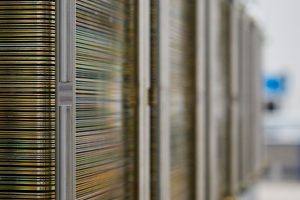Known by some as ‘the global production language’, Open Platform Communications Unified Architecture (OPC UA) enables improved data communication and interoperability between devices and systems in many industries. By joining the OPC Foundation behind the standard and becoming the first electrolyser producer to use OPC UA on its electrolysers, Enapter has opened up even easier deployment of its green hydrogen generators for solutions ranging from energy self-sufficiency to green gas production.
“Alongside the OPC UA Foundation, we wanted to make it even easier for today’s industry leaders who are using systems and devices running OPC UA to transition to green hydrogen. We believe that assuring the digital interoperability of our electrolysers will accelerate industry’s adoption of green hydrogen,” said Sebastian-Justus Schmidt, Founder and CEO of Enapter.
Based on AEM electrolyser technology, Enapter’s green hydrogen generators are used in diverse applications in more than 50 countries. The company is currently building the Enapter Campus mass production and R&D site in Saerbeck, Germany, where it also intends to use OPC UA for standardised and secure communication between production line devices.
While its EL 4.0 electrolysers running OPC UA will be able to enable easy and secure integration with third-party energy management systems, Enapter also offers users its own energy management system toolkit for integration and control of Enapter and third-party devices.
Enapter’s work with OPC UA started around six months ago, in parallel with the foundation of the working group developing the OPC UA interface standard for energy devices and systems. The pioneering use of OPC UA in electrolysers is also an expansion of Enapter’s open-source software focus, with some of its information model additions around green hydrogen systems also proposed to be added to the standard OPC UA information models – a development that could broaden the potential for integration of other energy transition assets within OPC UA.






